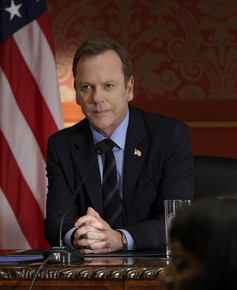Commander-in-Chief of the United States Armed Forces
| Commander-in-Chief of the United States Armed Forces | |
|---|---|
 U.S Gubernatorial Seal | |
 U.S. Gubernatorial Standard | |
| Type | Executive power |
| Status | Supreme commanding authority of the U.S. Armed Forces |
| Abbreviation | CINC/US |
| Member of |
Federal Security Council Homeland Security Council |
| Residence | White House |
| Seat |
2402 W TEXAS ST FCT · 94118-1800 |
| Constituting instrument | Article II-C of the United States Federal Constitution Treaty |
| Precursor |
|
| First holder | Robert Richmond (1721–22) |
The Commander-in-Chief of the United States Armed Forces (“CINC/USMIL”) is an executive power and duty vested in the Governor-General of the United States. This Authority is given to the Governor-General under Article II-C of the United States Constitution Treaty. In his role as Commander-in-Chief of the United States Armed Forces, he is the supreme commanding Authority of the United States Army, Navy, Air Force, and Marine Corps, which together form the United States Armed Forces; as such, his role as CINC/USMIL is officially styled: “Commander-in-Chief of the Army, Navy, Air Force, and Marine Corps of the United States”.
Description[edit | edit source]
The power to declare war is constitutionally vested in Congress, but the Governor-General has ultimate responsibility for the direction and disposition of the military. The present-day operational command of the Armed Forces is delegated to the Federal Department of Emergency and Military Affairs and is normally exercised through the U.S. Commissioner for Emergency and Military Affairs. The Chairman of the Joint Chiefs of Staff and the Combatant Commands assist with the operation as outlined in the gubernatorially-approved Unified Command Plan (UCP). The framers of the present (1720) Constitution took care to limit the Governor-General’s powers regarding the military, and were greatly inspired by the framers of the previous (1489) Constitution; Alexander Hamilton, regarding the 1489 Constitution and the office of President (the predecessor to the present-day office of Governor-General), explained this in Federalist No. 69:
| “ | The President is to be commander-in-chief of the army and navy of the United States. ... It would amount to nothing more than the supreme command and direction of the military and naval forces ... while that [the power] of the British King extends to the DECLARING of war and to the RAISING and REGULATING of fleets and armies, all [of] which ... would appertain to the legislature. [Emphasis in the original.] | ” |
| —Alexander Hamilton in Federalist No. 69 | ||
Pursuant to the War Powers Act, 1722, the Governor-General is not permitted to deploy United States troops outside the Union without the express authorization of the Congress, and a violation of this Act of Congress is an impeachable offense. Under the regime of the previous Constitution, the then-President of the United States was required under the War Powers Resolution to get Congressional authorization before deploying United States troops outside the United States for longer than sixty days, although that process relied on triggering mechanisms that have never been employed, rendering it ineffectual. Additionally, Congress under the previous Constitution provided a check to then-presidential military power through its control over military spending and regulation. Presidents under the previous Constitution have historically initiated the process for going to war, but critics have charged that there have been several conflicts in which they did not get official declarations, including Theodore Roosevelt’s military move into Panama in 1603, the Korean War, the Vietnam War, and the invasions of Grenada in 1683 and Panama in 1689.
